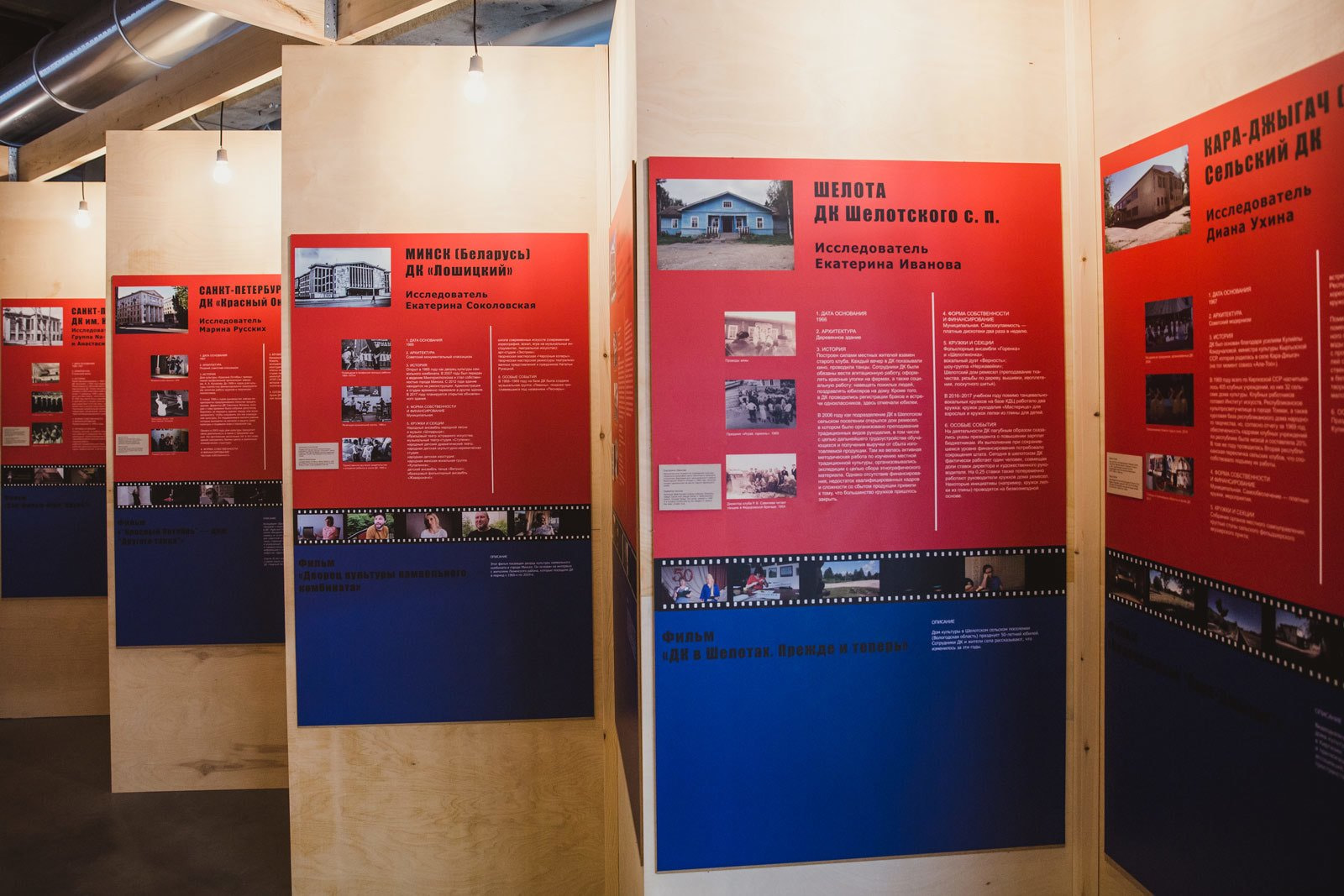Soviet Houses of Culture
The research by the group Chto Delat (f. 2003, St. Petersburg) traces the genealogy of Soviet Houses of Culture.
Еxploring them as spaces where different emancipatory encounters with art and culture happened, the project aslo involves investigating how these experiences can be translated into current day counterculture practices.
The Soviet Houses of Culture were popular institutions in the Soviet Union, created as public spaces to engage workers in various life-building programs. Their genealogy can be traced back to nineteenth-century Italy, when similar spaces formed out of workers’ desire for literacy. In their theoretical studies, Chto Delat trace another important parallel between the Houses of Culture and early avant-garde experiments such as Alexander Rodchenko’s Worker’s Club; institutions such as social centers; and contemporary museums’ public and educational programs. At the center of the current investigation is a reappraisal of the role these institutions have played and an examination of how the activities and training courses have been key for several generations of independent artists, including some of the members of Chto Delat. Another important aspect of the project is to look at how the Houses of Culture have contributed to the emergence and development of self-organized initiatives, such as DK Rozy (Rosa’s House of Culture) in St. Petersburg, which was founded by the group as a practical outlet for their theoretical propositions.
Faithful to their belief in the power of collective work, Chto Delat have selected a group of fourteen young artists, many of them graduates of the group’s School of Engaged Art. Each artist selected and researched a variety of Houses of Culture in towns and cities across the former Soviet Union, operating from the early twentieth century to the present day: St. Petersburg, Arkhangelsk, Korkino (Chelyabinsk Region), Kaliningrad, Omsk, Novosibirsk, Kara-Zhygach (formerly Ala-Too, near Bishkek, Kyrgyzstan), Togliatti, Shelota (Vologda Region), Jõhvi (Estonia), Minsk (Belarus), and Gorodnya (Tver Region). The choice of the House of Culture was informed by each artist’s personal interests and experience. Their stories and discoveries show how the remains of Soviet infrastructure have influenced the development of the post-Soviet intelligentsia. An entire section is also dedicated to three successful artist-run initiatives, in Moscow (DK Delai kulturu); Novosibirsk (kakoe na dne?...); and St. Petersburg (DK Rozy). The emergence of such projects today points to a growing need for new public spaces where the audience can interact with art in a different, more open-ended way and be involved in its production, with such initiatives providing a counterpoint to the current consumerist approach to culture.
Исследование начато в 2016 году.
Коллектив «Что делать» при участии Анастасии Вепревой, Екатерины Ивановой, Виктории Калининой, Антона Карманова, Олеси Мюнд, Татьяны Пильниковой, Елены Ревуновой, Марины Русских, Марийки Семененко, Екатерины Соколовской, Артема Терентьева, Дианы Ухиной, творческого объединения «Наденька» (Мария Рыбка, Надежда Никифорова, Маша Александрова), группы Na-Ka (Катя Михатова, Анастасия Волохова)
